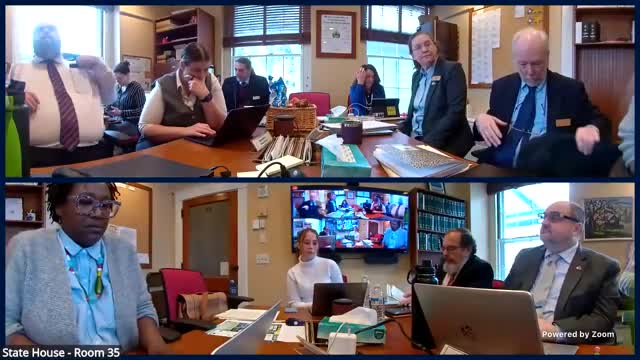Vermont superintendents push for improved governance of CTE programs
March 22, 2025 | Commerce & Economic Development, HOUSE OF REPRESENTATIVES, Committees, Legislative , Vermont
This article was created by AI summarizing key points discussed. AI makes mistakes, so for full details and context, please refer to the video of the full meeting. Please report any errors so we can fix them. Report an error »

A pivotal discussion on Career and Technical Education (CTE) governance took place during the House Commerce meeting in Vermont, highlighting the urgent need for reform in the state's educational structure. The meeting, held on March 21, 2025, revealed a consensus among superintendents that any changes to CTE governance should be postponed until after public education reforms are fully understood.
Superintendent Meg Hansinger emphasized the importance of learning from existing tech centers before moving towards a single tech district model. "Every superintendent I spoke with said that they would much prefer that CTE governance be determined after they have been able to see what public education reform looks like in general," she noted, reflecting a shared sentiment among her peers.
The report presented outlined various governance structures of independent tech centers, with a focus on their autonomy and the challenges they face. Notably, concerns were raised about the governor's proposal for a supervisory role by the Agency of Education, which many believe could hinder the effectiveness of CTE programs. Scott Farr, a director, argued for a separate CTE board to ensure that funding and resources are adequately directed to these centers.
Funding emerged as a critical issue, with directors expressing worries about the proposed funding disparities between regular public schools and CTE centers. This disparity, they argued, creates an adversarial relationship that discourages schools from sending students to CTE programs. "The proposal that each school district receive $13,000 for a student attending a regular public school, but only $5,000 for a student attending a CTE center, disincentivizes schools from sending students to CTE centers," Farr stated.
As enrollment in CTE programs continues to rise, the directors called for immediate changes to regulations and funding structures to better support students and programs. Jody Emerson highlighted the need for standardized graduation requirements to streamline the transition for students into CTE courses, advocating for a comprehensive high school model that integrates CTE offerings from the start.
The meeting underscored the urgency for legislative action to address these concerns, with directors planning to send a letter to legislators outlining their feedback on the proposed CTE governance changes. As Vermont navigates these educational reforms, the voices of CTE leaders will be crucial in shaping a system that meets the needs of students and the workforce alike.
Superintendent Meg Hansinger emphasized the importance of learning from existing tech centers before moving towards a single tech district model. "Every superintendent I spoke with said that they would much prefer that CTE governance be determined after they have been able to see what public education reform looks like in general," she noted, reflecting a shared sentiment among her peers.
The report presented outlined various governance structures of independent tech centers, with a focus on their autonomy and the challenges they face. Notably, concerns were raised about the governor's proposal for a supervisory role by the Agency of Education, which many believe could hinder the effectiveness of CTE programs. Scott Farr, a director, argued for a separate CTE board to ensure that funding and resources are adequately directed to these centers.
Funding emerged as a critical issue, with directors expressing worries about the proposed funding disparities between regular public schools and CTE centers. This disparity, they argued, creates an adversarial relationship that discourages schools from sending students to CTE programs. "The proposal that each school district receive $13,000 for a student attending a regular public school, but only $5,000 for a student attending a CTE center, disincentivizes schools from sending students to CTE centers," Farr stated.
As enrollment in CTE programs continues to rise, the directors called for immediate changes to regulations and funding structures to better support students and programs. Jody Emerson highlighted the need for standardized graduation requirements to streamline the transition for students into CTE courses, advocating for a comprehensive high school model that integrates CTE offerings from the start.
The meeting underscored the urgency for legislative action to address these concerns, with directors planning to send a letter to legislators outlining their feedback on the proposed CTE governance changes. As Vermont navigates these educational reforms, the voices of CTE leaders will be crucial in shaping a system that meets the needs of students and the workforce alike.
View full meeting
This article is based on a recent meeting—watch the full video and explore the complete transcript for deeper insights into the discussion.
View full meeting